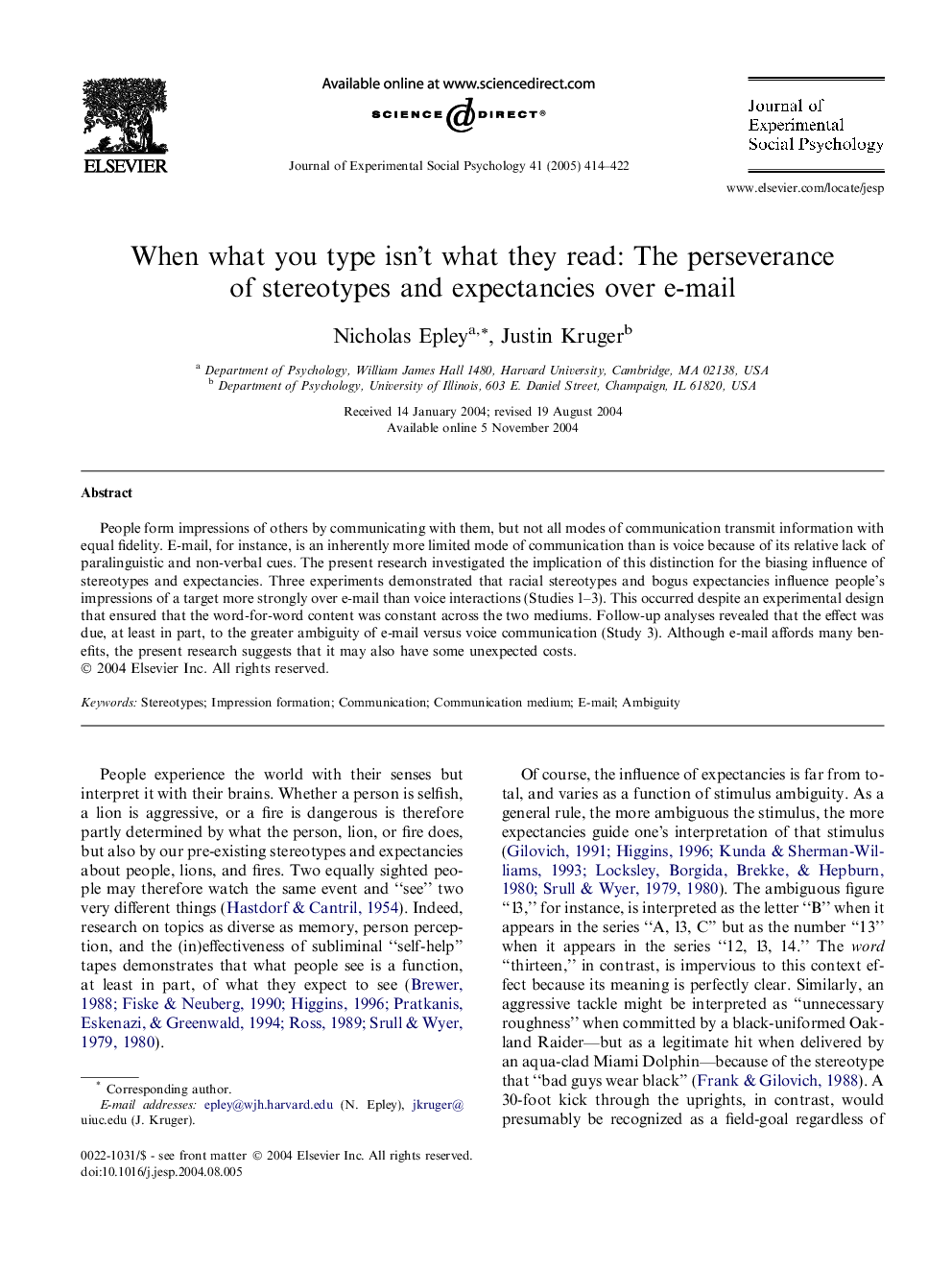| Article ID | Journal | Published Year | Pages | File Type |
|---|---|---|---|---|
| 10468733 | Journal of Experimental Social Psychology | 2005 | 9 Pages |
Abstract
People form impressions of others by communicating with them, but not all modes of communication transmit information with equal fidelity. E-mail, for instance, is an inherently more limited mode of communication than is voice because of its relative lack of paralinguistic and non-verbal cues. The present research investigated the implication of this distinction for the biasing influence of stereotypes and expectancies. Three experiments demonstrated that racial stereotypes and bogus expectancies influence people's impressions of a target more strongly over e-mail than voice interactions (Studies 1-3). This occurred despite an experimental design that ensured that the word-for-word content was constant across the two mediums. Follow-up analyses revealed that the effect was due, at least in part, to the greater ambiguity of e-mail versus voice communication (Study 3). Although e-mail affords many benefits, the present research suggests that it may also have some unexpected costs.
Related Topics
Life Sciences
Neuroscience
Behavioral Neuroscience
Authors
Nicholas Epley, Justin Kruger,
